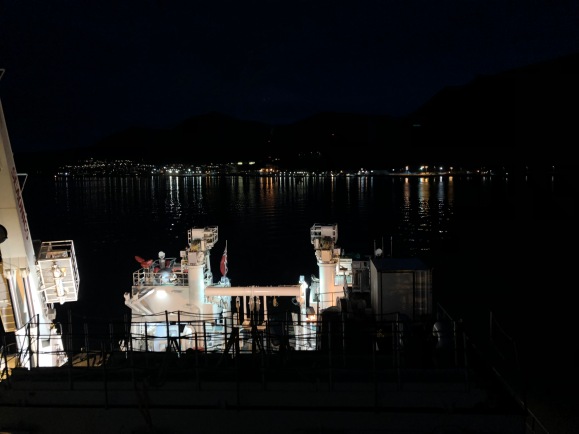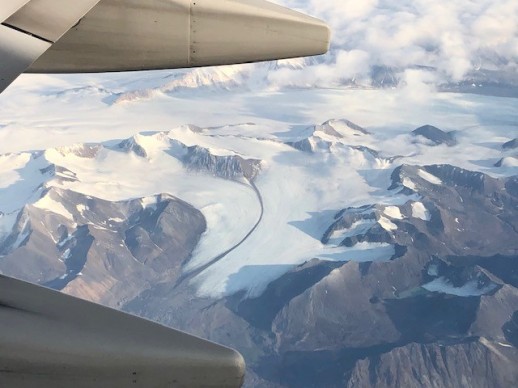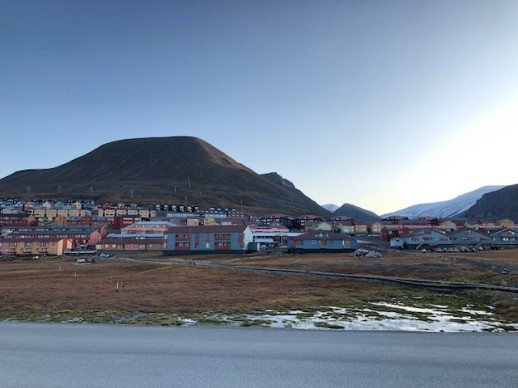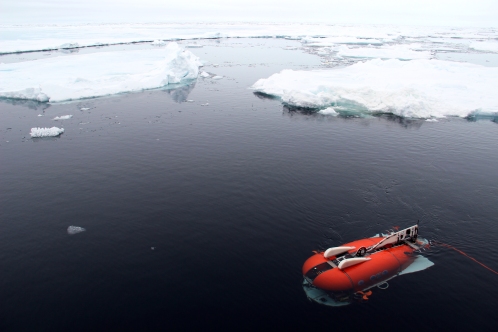23 September 2019 – 81°N
On Saturday, we woke to the Kronprins Haakon smoothly parting a frozen ocean, a process that – from our cabin on deck three, just above the sea — sounded like an oversized spoon being pushed through a planetary-scale slushie.
For a while, we stared as neatly fractured chunks of ice drifted apart, seemingly just beneath our toes, with water rushing in to fill the rapidly growing cracks.
From up above, on the ship’s lofty observation deck, the icy crust transformed the Arctic ocean into a vast, watercolored surface of white and gray, punctuated by scattered chunks that glowed a vibrant blue, as if lit from within by an otherworldly light.
I grew up by the ocean and know it well – but this sea was a stranger, so compellingly foreign and moving in such mesmerizing ways.
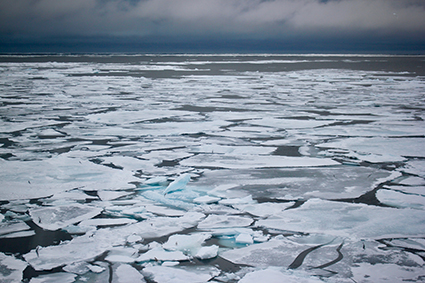
Photo: Nadia Drake
Sculpted by wind and water, the ice takes myriad shapes – some pieces smooth and flat, others pieces jagged and piled – kind of like clouds drifting across the sky. Except the ice isn’t fluffy, but is fractured and broken, as if Thor took his hammer and smashed a frozen crust into a jagged, moving jigsaw puzzle. It’s not just decoration for a lackluster sea, though; sea ice is crucial for healthy Arctic ecosystems, and indeed, for the health of our entire planet. Scientists who know the ice can tell how long it has been around, and whether it formed this season or is a veteran of multiple winters. Perhaps not surprisingly, the crusts that accumulate and survive multiple orbits are waning – they’re vanishing, just as glaciers melt and icebergs thaw and ice shelves collapse.
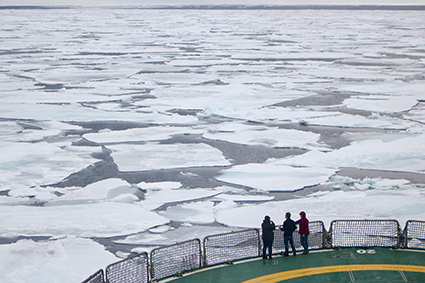
Photo: Nadia Drake
Now, as we head back to Longyearbyen to pick up a crucial, delayed piece of equipment, the Arctic water is again rough, a white-capped expanse of excited, roiling gray. Soon, though, we’ll return to the ocean that caps planet Earth, and dive beneath its surface to explore its alien abyss.
Nadia Drake is a contributing writer at National Geographic, and is on assignment with the HACON team as it explores the Aurora hydrothermal vent field.

